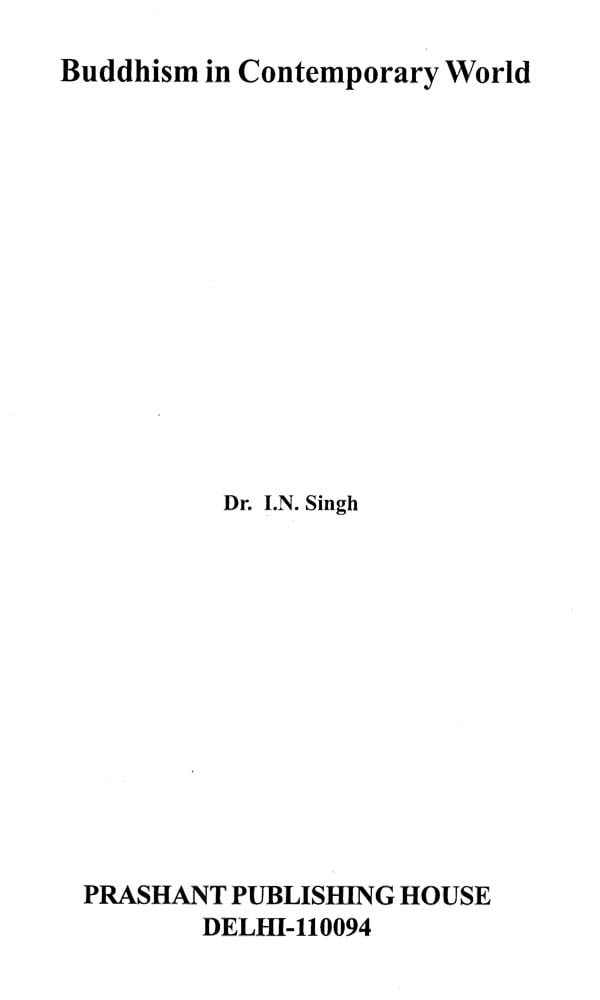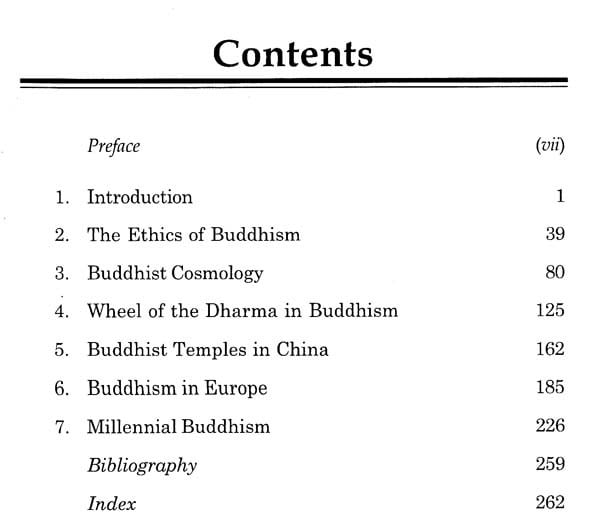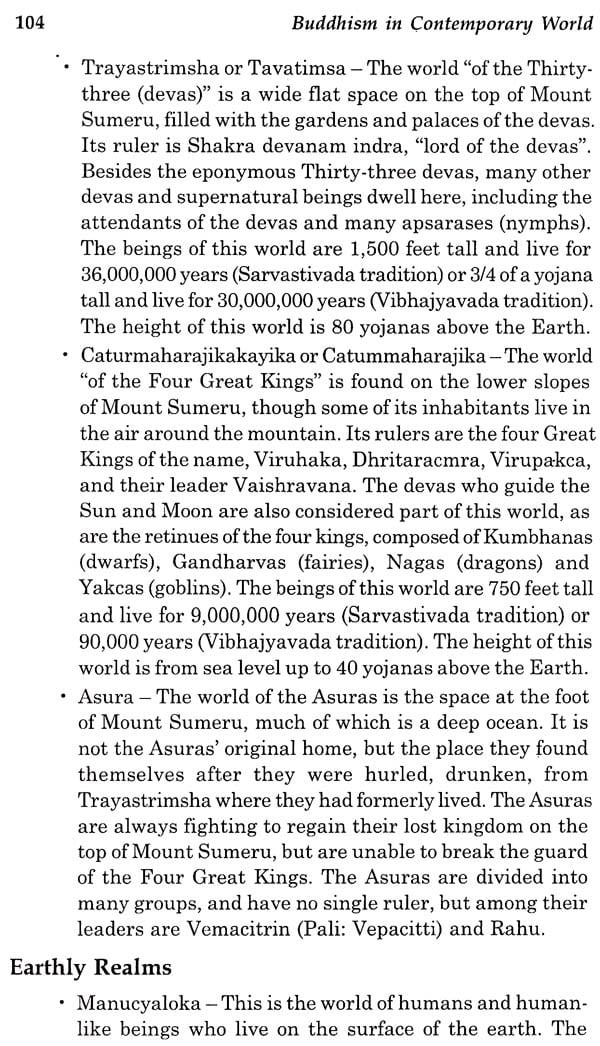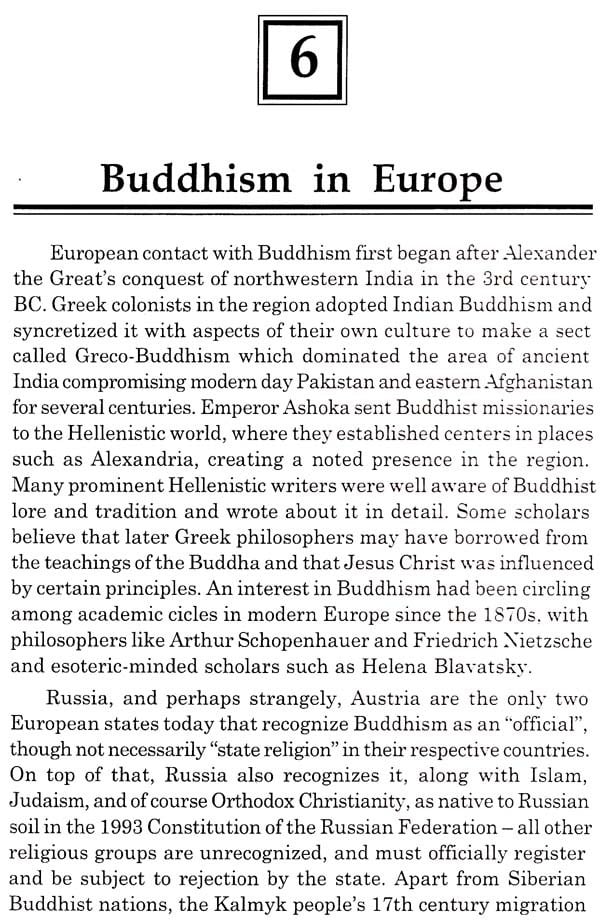
Buddhism in Contemporary World
Book Specification
| Item Code: | UAR298 |
| Author: | Indra Narayan Singh |
| Publisher: | Prashant Publishing House, Delhi |
| Language: | English |
| Edition: | 2018 |
| ISBN: | 9788193719312 |
| Pages: | 270 |
| Cover: | HARDCOVER |
| Other Details | 9.00 X 6.00 inch |
| Weight | 500 gm |
Book Description
Buddhism has adapted to rapid economic, social, cultural and political transformations in the modem, post-modern and globalized world. Buddhism is spreading rapidly around the world now. There are Buddhist centers in many European countries, North America, South America, South Africa, Australasia, and so on. We find Buddhists in Europe not only in the Western capitalist countries, but also in the socialist countries of the East. For example, Poland has about 5,000 active Buddhists. At the same time-bath in the past and in the contemporary world - Buddhist clerics have encouraged to, and also engaged in, armed conflicts and wars. This class covers, with a thematic and/or regional focus, such modem Buddhist developments. The book deals with Buddhism in view of what ails the modern world today. The threat of global nuclear destruction is a real possibility. What a mess the human race has landed itself in! The progress of science and technology has brought many comforts and luxuries to mankind, but at the same time, it has also endangered the human species because of nuclear war weapons, if used, there will be no escape from the destruction far and wide.
Dr. Indra Narayan Singh, a Senior Lecturer in the Department of Buddhist Studies Delhi University Since 1996, obtained his Doctorate on A Study of Universal Flux in Theravada Buddhism.
Dr. Singh has published a number of articles and is a regular contributor to various journals and magazines of national and international repute. He has also edited the journals of Buddhist Studies.
Buddhism has adapted to rapid economic, social, cultural and political transformations in the modern, post-modern and globalized world. Since its inception in India in the sixth century BC, Buddhism spread, first throughout Asia, and then globally in the nineteenth and twentieth centuries.
The history of Buddhism in India, which lasted about 1500 years, can be divided into 500 year periods, during which distinctive forms of Buddhism emerged. This is an idealized and schematic picture, but it is convenient, and it can be matched up with where Buddhism spread during these periods and what forms of Buddhism became dominant there. Buddhist doctrine and practice in the earliest period were agreed upon in a series of Councils, sometimes reckoned to be three, or four.
Buddhism has shown a remarkable flexibility and an ability to co-exist with a variety of social structures as it spread not only to farming and herding societies, but also to highly complex Asian and Western urban centers.
Buddhism appeals very much to the modern world because it is reasonable and scientifically based. Buddha said, "Do not believe in anything that I say just out of respect for me, but test it for yourself, analyze it, as if you were buying gold." Modern day people like such a non-dogmatic approach.
This book contains the fundamental and basic information of subject and the selection of contents makes it an appropriate book for the students.
**Contents and Sample Pages**















